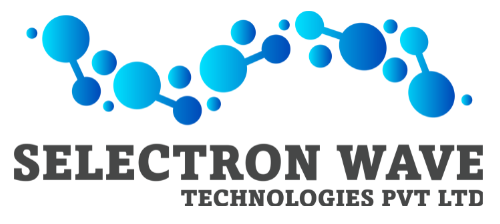What is Hyperledger Fabric and How Does it Work?
In the rapidly evolving landscape of blockchain technology, Hyperledger Fabric stands out as a robust and flexible platform tailored for enterprise solutions. Unlike public blockchains like Bitcoin or Ethereum, Hyperledger Fabric is designed to be a permissioned blockchain, allowing businesses to create a secure and scalable environment for their specific needs. In this blog, we’ll explore what Hyperledger Fabric is, how it works, and why it’s a game-changer in the world of enterprise blockchain solutions.
What is Hyperledger Fabric?
Hyperledger Fabric is an open-source blockchain framework hosted by the Linux Foundation. It is a modular and customizable architecture that allows businesses to create tailored blockchain networks with specific features and functionalities. Unlike traditional public blockchains, where anyone can join and participate, Hyperledger Fabric operates in a permissioned environment, where participants are known and trusted.
Key Features of Hyperledger Fabric:
1. Modularity: Hyperledger Fabric’s architecture is highly modular, allowing developers to plug in different components according to the specific needs of their application. This includes pluggable consensus mechanisms, membership services, and ledger storage options.
2. Permissioned Network: Unlike public blockchains, Hyperledger Fabric is a permissioned blockchain, meaning that all participants in the network are known and must have permission to join. This enhances security and privacy, making it ideal for enterprise use.
3. Private Channels: Hyperledger Fabric supports private channels, which allow a group of participants to create a separate ledger of transactions that are not visible to others on the network. This is particularly useful for businesses that require confidentiality in their transactions.
4. Smart Contracts: Hyperledger Fabric uses Chaincode, its version of smart contracts, which are written in general-purpose programming languages like Go, Java, and JavaScript. These Chaincodes define the business logic of the system and are executed by the network’s peers.
How Does Hyperledger Fabric Work?
1. Network Setup:
Participants: The network is composed of organizations, each of which has its own peers (nodes) that store the ledger and execute Chaincode. The participants in the network must be authorized and authenticated.
Orderers: The ordering service is responsible for ordering the transactions into a block and delivering them to the peers in the network. It ensures that all peers have the same sequence of transactions.
2. Transaction Flow:
Proposal Creation: A client application submits a transaction proposal to the peers. The peers simulate the transaction by executing the Chaincode without updating the ledger. Each peer then endorses the transaction by signing it.
Endorsement Policy: The transaction must meet a predefined endorsement policy, which specifies which and how many peers must endorse a transaction.
Ordering: Once the transaction is endorsed, it is sent to the ordering service, which collects endorsed transactions from multiple clients and orders them into blocks.
Validation and Commit: The ordered block is sent to all peers for validation. The peers check the endorsement policy and validate the transactions within the block. If the block is valid, it is committed to the ledger.
3. Consensus Mechanism:
Hyperledger Fabric does not use a traditional mining process like public blockchains. Instead, it relies on a consensus mechanism that involves endorsement by a specified number of peers and the ordering service. This approach reduces the computational cost and increases the efficiency of the network.
Applications of Hyperledger Fabric
Hyperledger Fabric’s flexibility and security make it suitable for a wide range of industries, including finance, supply chain management, healthcare, and more. Here are a few examples of how it is being used:
Supply Chain Management: Hyperledger Fabric allows for tracking and verifying the authenticity of goods as they move through the supply chain, ensuring transparency and reducing fraud.
Healthcare: It can be used to securely share patient records across different healthcare providers while maintaining patient privacy.
Finance: Hyperledger Fabric can streamline cross-border payments and trade finance, reducing transaction times and costs.
Conclusion
Hyperledger Fabric is a powerful and flexible blockchain framework that is transforming how enterprises approach blockchain technology. Its permissioned network, modular architecture, and focus on privacy make it an ideal choice for businesses looking to leverage blockchain for their specific needs. As the technology continues to evolve, Hyperledger Fabric is likely to play a key role in the future of enterprise blockchain solutions.
Are you interested in learning more about Hyperledger?
Get in touch with us today.




